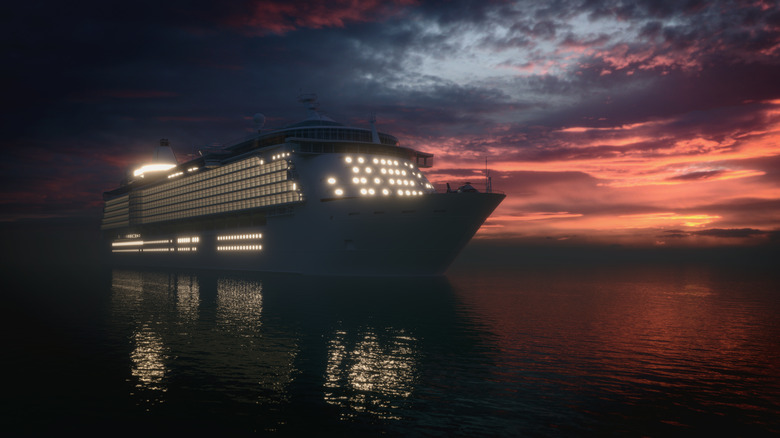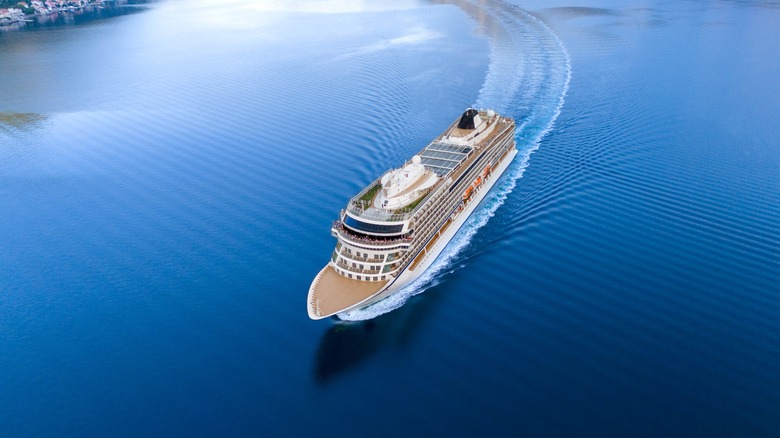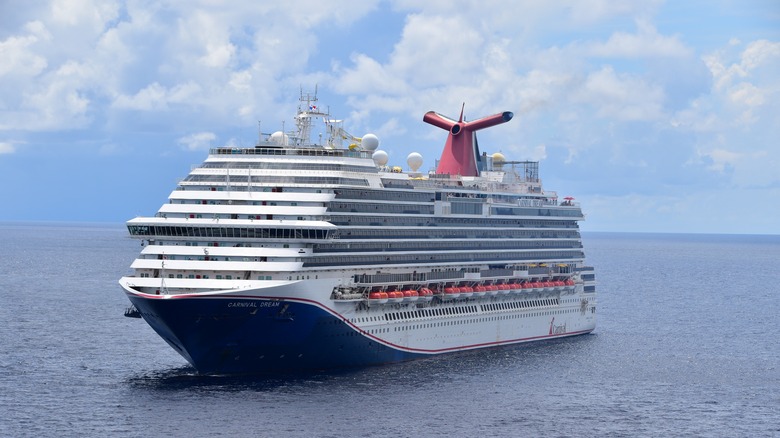
Cruise ships look graceful gliding through open water. However, turning them around is a whole different story. The biggest cruise ships feel like floating cities that can stretch up to 300 meters long and can weigh over 200,000 tons. So when it's time to change direction, it doesn't happen quickly. In fact, there's a concept known as "turning radius" that the captains strictly follow. In simple terms, a turning radius is the minimum circular path of the ship while turning, and for something the size
of a cruise ship, that path can be massive.
Turning a cruise ship is not as simple as swinging the wheel. Quite the opposite, there are some typical calculations that needs to be done while turning it around. Furthermore, the turning radius is influenced by a lot of factors. Rudder angle, hull shape, how fast the ship is moving, water depth, and even wind -- all come into play. On average, a cruise ship's turning radius is roughly around 3 to 4 times its own length. So, if a ship is 300 meters long, then it might need over 1,200 meters of space to make a full turn. But unlike the open sea, when the ship is moving around places like channels and ports, turning them around needs precision and expertise.
Read more: 10 Luxury Cars That Are Cheap To Maintain
How Ships Actually Turn?

When a ship turns, it doesn't pivot like a car. Instead, it follows a curved path called the "turning circle." This is tested during sea trials after a ship is built, usually using a standard method: full speed ahead with a 35° rudder angle. The ship's pivot point, which is usually located about one-third of the way from the bow, acts as the center of rotation. From there, the ship moves in a wide arc, and several things are measured, like advance (how far it goes forward before completing a 90° turn), transfer (how far it shifts sideways), and tactical diameter (distance moved during a 180° turn).
Speed makes a big difference in turning the ship as well. When the ship goes faster, its turn naturally becomes wider because it becomes harder for the water to push the hull and change direction. If the captain tries to turn quickly at high speeds, it can suddenly slow the ship down by even 25% sometimes. In fact, in some cases, it can even start to lean on one side. The ship leans into the turn first, but as the turn gets sharper, it may tilt outward. This movement can feel strange to people onboard, so captains have to handle it carefully to keep things smooth and safe.
What Affects A Cruise Ship's Turning Radius?

A cruise ship's shape, trim, and underwater profile impact how tightly it can turn. For instance, the fuller hulls, which you can find on cruise or bulk carriers, typically have better turning ability than finer hulls, like container ships. But cruise ships are also top-heavy and more affected by wind, making precise control harder. Trim matters too. If the ship is trimmed by the stern (back lower than front), it tends to widen the turning circle. Similarly, a trim by the bow tightens the turn but can reduce control, especially in high winds.
Water conditions add to the process as well. In shallow water, the turning radius can double due to increased drag. A fouled hull, when marine growth builds up, can worsen the response even further. External forces like current and wind can throw off the turn entirely. Thus, to keep things safe, international standards (IMO) limit the turning circle to five times the ship's length and the advance to 4.5 times. Still, no two turns are ever the same. Cruise ships often rely on zig-zag and spiral movements to understand exactly how they'll respond at sea.
Want the latest in tech and auto trends? Subscribe to our free newsletter for the latest headlines, expert guides, and how-to tips, one email at a time.
Read the original article on SlashGear.











